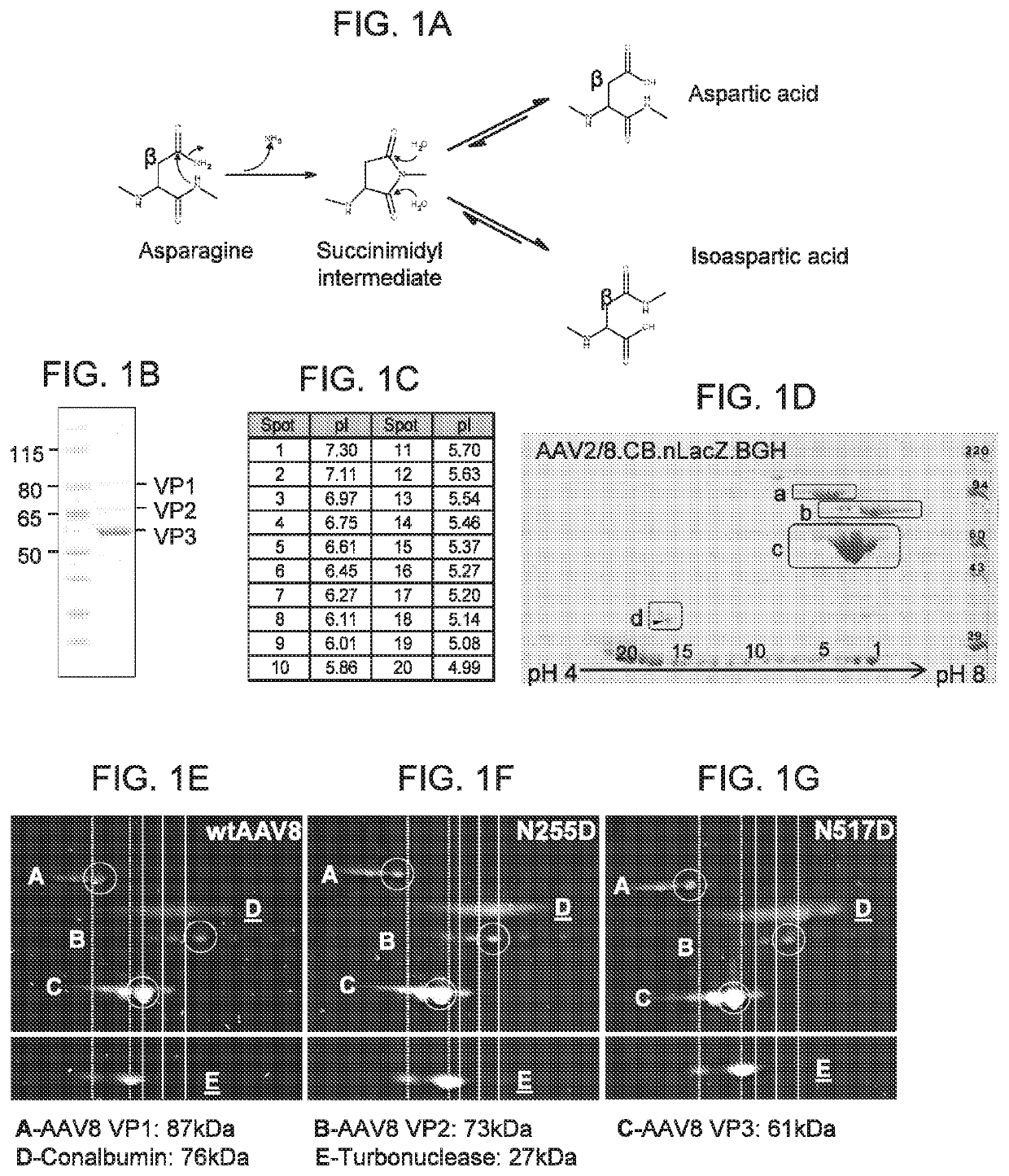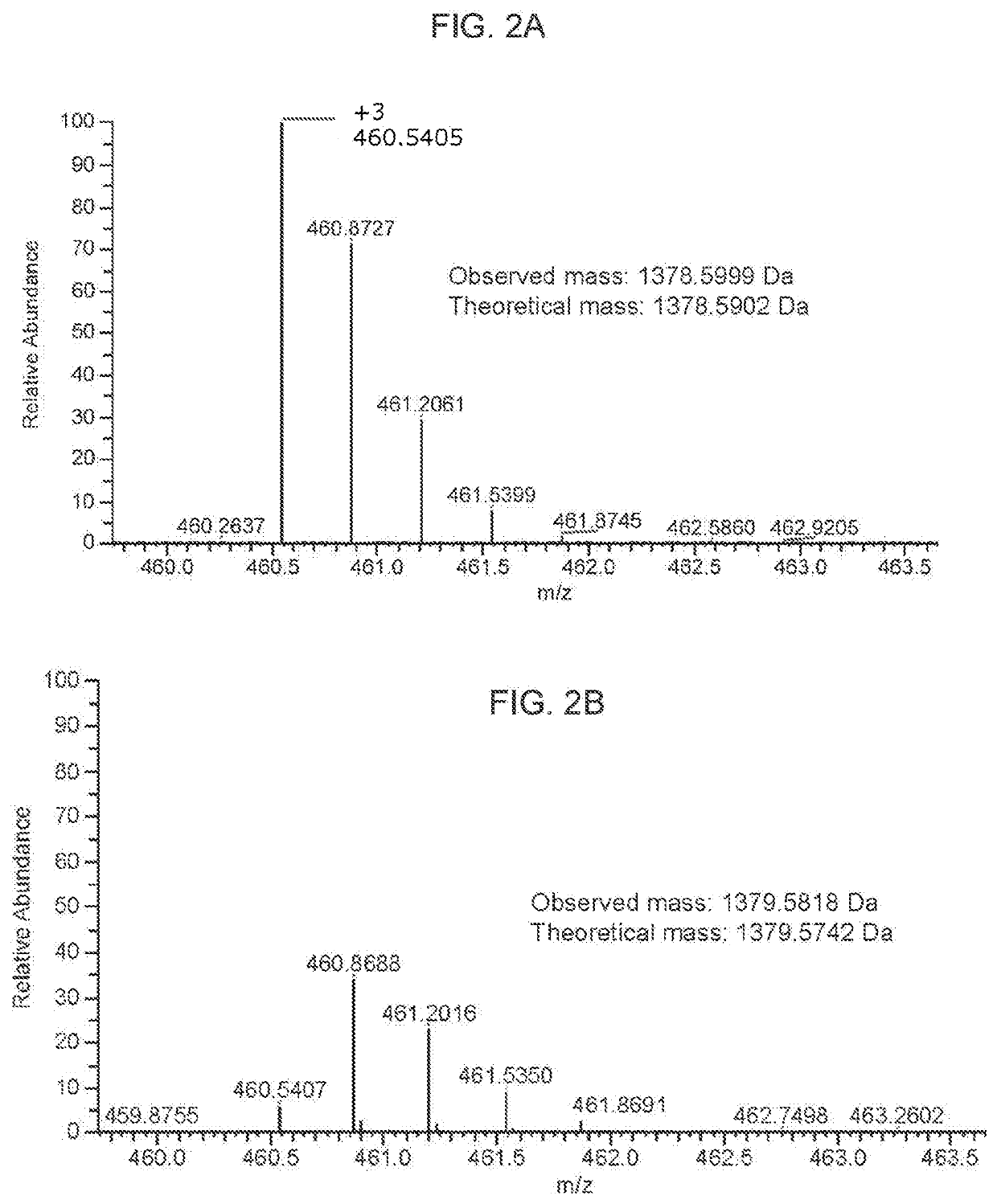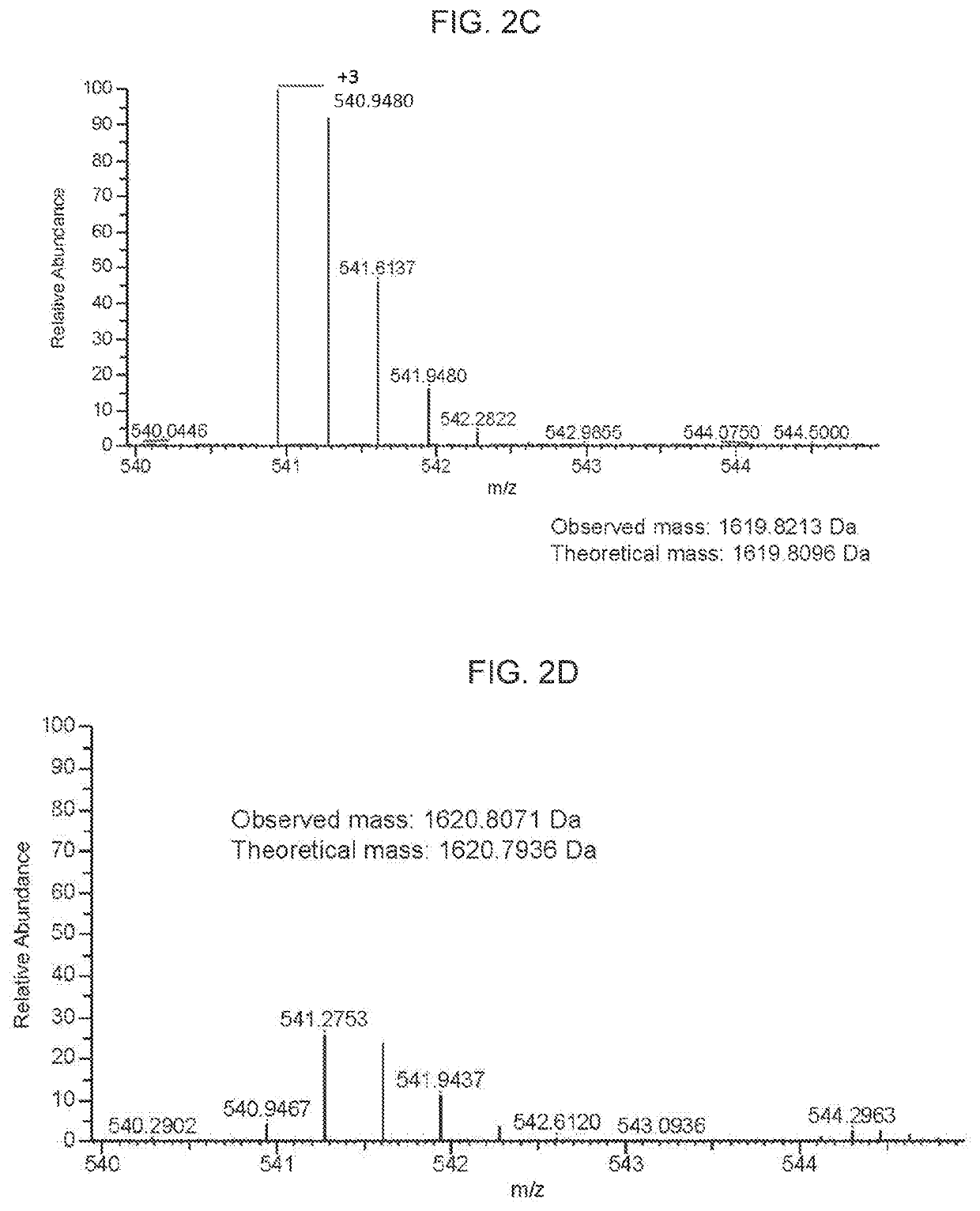Novel adeno-associated virus (AAV) vectors, aav vectors having reduced capsid deamidation and uses therefor
a technology of adenovirus and vector, applied in the field of new adenovirus (aav) vector, aav vector having reduced capsid deamidation, can solve problems such as complicated drug developmen
- Summary
- Abstract
- Description
- Claims
- Application Information
AI Technical Summary
Benefits of technology
Problems solved by technology
Method used
Image
Examples
example 1
on of Amino Acids on the Surface of Adeno-Associated Virus Capsids
[0185]A. Materials and Methods
[0186]1. 1D and 2D Gel Electrophoresis
[0187]For 1D SDS polyacrylamide gel electrophoresis (SDS-PAGE) analysis, we first denatured AAV vectors at 80° C. for 20 minutes in the presence of lithium dodecyl sulfate and reducing agent. Then, we ran them on a 4-12% Bis-Tris gel for 90 minutes at 200V and stained with Coomassie blue. For the data in FIG. 1A-FIG. 1D, Kendrick Laboratories, Inc. (Madison, Wis.) performed the 2D gel electrophoresis. For subsequent experiments, we performed 2D SDS-PAGE in-house. For this, we combined 3×1011 GCs of AAV vector with 500U turbonuclease marker (Accelagen, San Diego, Calif.) in 150μL phosphate buffered saline (PBS) with 35 mM NaCl and 1 mM MgCl2 and incubated at 37° C. for ten minutes. We next added nine volumes of absolute ethanol, vortexed the samples, and incubated them at −80° C. for at least two hours followed by incubation on ice for five minutes and...
example 2
on AAV5.5.9
[0248]The novel sequences of AAV5.5.9 are provided in SEQ ID NO: 9 and 10, respectively. AAV5.5.9 vectors were assessed for deamidation as described in Example 1 for AAV9. Highly deamidated residues are seen at N57, N319, N442, N502.
ModificationSEQ ID NO: 10WL2019CSEnzymeTrypsin% Coverage97.4N35 + Deamidation7.8~N57 + Deamidation99.7N113 + Deamidation3.6~N204 + Deamidation13.9N217 + Deamidation2.2~N243 + Deamidation19.0Q249 + Deamidation11.4N293 / 294 + Deamidation37.3N304 + Deamidation6.2N309 + Deamidation0.7Q311 + Deamidation0.3~N319 + Deamidation83.9N399 / 400 + Deamidation30.8~N442 + Deamidation97.7N467 + Deamidation2.6N502 + Deamidation100.0N505 + Deamidation18.6~Q589 + Deamidation21.1N618 + Deamidation6.6~N641 + Deamidation8.1N653 + Deamidation8.3~N658 + Deamidation21.7N694 + Deamidation0.6~N699 + Deamidation8.6
example 3
on AAVrh79 (Clade E)
[0249]AAVrh79 was isolated from DNA extracted from small bowel tissue of rhesus macaque. It has been characterized phylogenetically as being within Clade E (FIG. 14A-14D). Its sequences are provided herein, with the nucleotide sequences being in SEQ ID NO:1 and the amino acid sequence being in SEQ ID NO:2. An alignment of the amino acid sequences of AAVrh79, AAVrh.10 and AAVhu.37 are provided in FIG. 14A. An alignment of the nucleic acid sequences of AAVrh79, AAVrh.10 and AAVhu.37 are provided in FIG. 14B-14D.
[0250]AAVrh79 has three amino acid differences in its primary sequence. Whereas AAVhu37 has an Ala located at position 67 and a Lys at position 169 of its primary VP1 sequence, AAVrh79 has a glutamic acid (E) at position 67 and an Arg at position 169. Differences in the DNA sequences of VP1 among rh.79, hu.37, and hu.40 are shown in FIG. 11B. Vectors expressing eGFP based on the various clade E variants were prepared and evaluated for their relative infectiv...
PUM
| Property | Measurement | Unit |
|---|---|---|
| Fraction | aaaaa | aaaaa |
| Fraction | aaaaa | aaaaa |
| Fraction | aaaaa | aaaaa |
Abstract
Description
Claims
Application Information
 Login to View More
Login to View More - R&D
- Intellectual Property
- Life Sciences
- Materials
- Tech Scout
- Unparalleled Data Quality
- Higher Quality Content
- 60% Fewer Hallucinations
Browse by: Latest US Patents, China's latest patents, Technical Efficacy Thesaurus, Application Domain, Technology Topic, Popular Technical Reports.
© 2025 PatSnap. All rights reserved.Legal|Privacy policy|Modern Slavery Act Transparency Statement|Sitemap|About US| Contact US: help@patsnap.com



